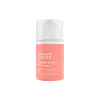What's inside
What's inside
 Key Ingredients
Key Ingredients

 Benefits
Benefits

 Concerns
Concerns

No concerns
 Ingredients Side-by-side
Ingredients Side-by-side

Water
Skin ConditioningSqualane
EmollientGlycerin
HumectantPentylene Glycol
Skin ConditioningPolyglyceryl-2 Stearate
EmulsifyingGlyceryl Stearate
EmollientStearyl Alcohol
EmollientHyaluronic Acid
HumectantCeramide EOP
Skin ConditioningCeramide Ng
Skin ConditioningCeramide NP
Skin ConditioningCeramide As
Skin ConditioningCeramide AP
Skin ConditioningCarnosine
Skin ConditioningHydrogenated Lecithin
EmulsifyingPhytosterols
Skin ConditioningCaprylyl Glycol
EmollientPolyacrylate Crosspolymer-11
Emulsion Stabilising1,2-Hexanediol
Skin ConditioningWater
Skin ConditioningIsoamyl Laurate
EmollientGlycerin
HumectantButylene Glycol
HumectantSodium Polyacrylate Starch
AbsorbentCetyl Alcohol
EmollientLauroyl Lysine
Skin ConditioningLactobacillus/Rye Flour Ferment
Skin ConditioningLactobacillus Ferment
Skin ConditioningBifida Ferment Lysate
Skin ConditioningGlucomannan
Skin ConditioningSaccharomyces Lysate
Skin ConditioningLeuconostoc/Radish Root Ferment Filtrate
AntimicrobialGlycine Soja Seed Extract
Skin ConditioningCamellia Sinensis Leaf Extract
AntimicrobialTetrahexyldecyl Ascorbate
AntioxidantAcetyl Hexapeptide-1
Skin ConditioningPalmitoyl Dipeptide-10
Skin ConditioningCeramide Ng
Skin ConditioningOrbignya Oleifera Seed Oil
EmollientPalmitoyl Proline
Skin ConditioningGlycine
BufferingSerine
MaskingThreonine
Alanine
MaskingValine
MaskingArginine
MaskingProline
Skin ConditioningLysine Hcl
Skin ConditioningRubus Idaeus Fruit Extract
AstringentNiacinamide
SmoothingAdenosine
Skin ConditioningLecithin
EmollientPhytic Acid
Yeast Extract
Skin ConditioningTocopherol
AntioxidantSodium PCA
HumectantSodium Lactate
BufferingPCA
HumectantMagnesium Palmitoyl Glutamate
Skin ConditioningSodium Palmitoyl Sarcosinate
CleansingIsopropyl Palmitate
EmollientGlutamic Acid
HumectantBetaine
HumectantGlyceryl Stearate
EmollientHydroxyacetophenone
AntioxidantSodium Acrylates Copolymer
Ceteth-20
CleansingSteareth-20
CleansingPolysorbate 20
EmulsifyingPEG-75 Stearate
Caprylyl Glycol
EmollientPropylene Glycol
Humectant1,2-Hexanediol
Skin ConditioningPhenoxyethanol
PreservativeEthylhexylglycerin
Skin ConditioningWater, Isoamyl Laurate, Glycerin, Butylene Glycol, Sodium Polyacrylate Starch, Cetyl Alcohol, Lauroyl Lysine, Lactobacillus/Rye Flour Ferment, Lactobacillus Ferment, Bifida Ferment Lysate, Glucomannan, Saccharomyces Lysate, Leuconostoc/Radish Root Ferment Filtrate, Glycine Soja Seed Extract, Camellia Sinensis Leaf Extract, Tetrahexyldecyl Ascorbate, Acetyl Hexapeptide-1, Palmitoyl Dipeptide-10, Ceramide Ng, Orbignya Oleifera Seed Oil, Palmitoyl Proline, Glycine, Serine, Threonine, Alanine, Valine, Arginine, Proline, Lysine Hcl, Rubus Idaeus Fruit Extract, Niacinamide, Adenosine, Lecithin, Phytic Acid, Yeast Extract, Tocopherol, Sodium PCA, Sodium Lactate, PCA, Magnesium Palmitoyl Glutamate, Sodium Palmitoyl Sarcosinate, Isopropyl Palmitate, Glutamic Acid, Betaine, Glyceryl Stearate, Hydroxyacetophenone, Sodium Acrylates Copolymer, Ceteth-20, Steareth-20, Polysorbate 20, PEG-75 Stearate, Caprylyl Glycol, Propylene Glycol, 1,2-Hexanediol, Phenoxyethanol, Ethylhexylglycerin
 Reviews
Reviews

Ingredients Explained
These ingredients are found in both products.
Ingredients higher up in an ingredient list are typically present in a larger amount.
1,2-Hexanediol is a synthetic liquid and another multi-functional powerhouse.
It is a:
- Humectant, drawing moisture into the skin
- Emollient, helping to soften skin
- Solvent, dispersing and stabilizing formulas
- Preservative booster, enhancing the antimicrobial activity of other preservatives
Caprylyl Glycol is a humectant and emollient, meaning it attracts and preserves moisture.
It is a common ingredient in many products, especially those designed to hydrate skin. The primary benefits are retaining moisture, skin softening, and promoting a healthy skin barrier.
Though Caprylyl Glycol is an alcohol derived from fatty acids, it is not the kind that can dry out skin.
This ingredient is also used as a preservative to extend the life of products. It has slight antimicrobial properties.
Learn more about Caprylyl GlycolCeramide NG is a type of Ceramide. The NG stands for a sphinganine base.
Ceramides are intercellular lipids naturally found in our skin that bonds dead skin cells together to create a barrier. They are known for their ability to hold water and thus are a great ingredient for dry skin.
Ceramides are an important building block for our skin barrier. A stronger barrier helps the skin look more firm and hydrated. By bolstering the skin ceramides act as a barrier against irritating ingredients. This can help with inflammation as well.
If you would like to eat ceramides, sweet potatoes contain a small amount.
Read more about other common types of ceramides here:
Ceramide AP
Ceramide EOP
Ceramide NP
Glycerin is already naturally found in your skin. It helps moisturize and protect your skin.
A study from 2016 found glycerin to be more effective as a humectant than AHAs and hyaluronic acid.
As a humectant, it helps the skin stay hydrated by pulling moisture to your skin. The low molecular weight of glycerin allows it to pull moisture into the deeper layers of your skin.
Hydrated skin improves your skin barrier; Your skin barrier helps protect against irritants and bacteria.
Glycerin has also been found to have antimicrobial and antiviral properties. Due to these properties, glycerin is often used in wound and burn treatments.
In cosmetics, glycerin is usually derived from plants such as soybean or palm. However, it can also be sourced from animals, such as tallow or animal fat.
This ingredient is organic, colorless, odorless, and non-toxic.
Glycerin is the name for this ingredient in American English. British English uses Glycerol/Glycerine.
Learn more about GlycerinGlyceryl Stearate is a mix of glycerin and stearic acid.
It is used to stabilize the mixing of water and oil ingredients. By preventing these ingredients from separating, it can help elongate shelf life. It can also help thicken the product's texture.
As an emollient, it helps soften skin and supports barrier-replenishing ingredients.
In cosmetics, Glyceryl Stearate is often made from vegetable oils or synthetically produced.
This ingredient may not be fungal-acne safe
Fun fact: The human body also creates Glyceryl Stearate naturally.
Learn more about Glyceryl StearateWater. It's the most common cosmetic ingredient of all. You'll usually see it at the top of ingredient lists, meaning that it makes up the largest part of the product.
So why is it so popular? Water most often acts as a solvent - this means that it helps dissolve other ingredients into the formulation.
You'll also recognize water as that liquid we all need to stay alive. If you see this, drink a glass of water. Stay hydrated!
Learn more about Water